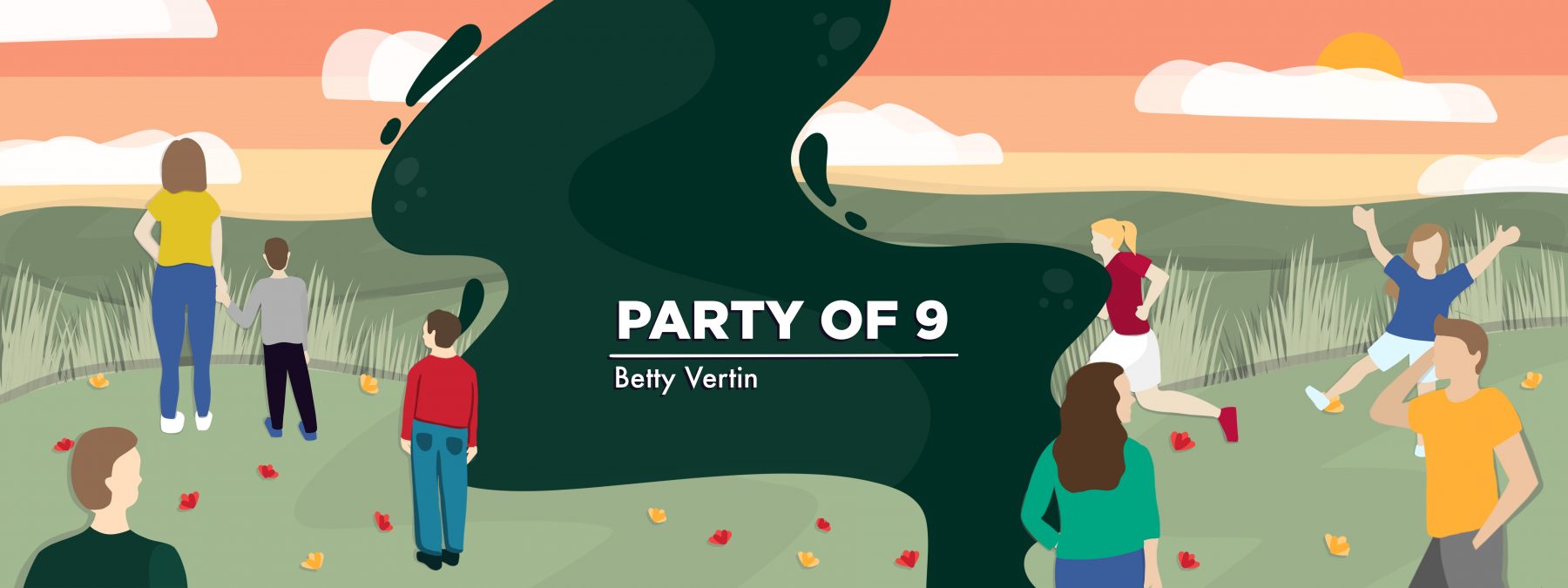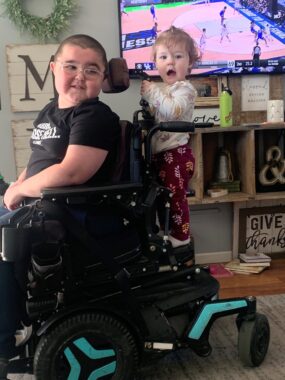Watching my baby grow up around power wheelchairs
A columnist tracks changes in perception about wheelchairs over a generation

As a child, I wasn’t around people who used power wheelchairs. Perhaps because my sons were the first people I’d met who were living with Duchenne muscular dystrophy (DMD), or maybe because I’m old enough, power chairs seemed less prevalent when I was younger.
After my sons were diagnosed with DMD, I was actually afraid to meet older boys who used power wheelchairs. That might seem strange coming from someone who loves three boys who use them now. But back then, I was scared because I didn’t want them to need one someday. Meeting and being around older boys and young men living with DMD and using power wheelchairs reminded me that my boys would eventually be unable to walk. And in the beginning, I wasn’t ready to accept that.
I was afraid of disease progression, and at the time, the chair was a sign of what disease was going to do to my sons’ bodies.
It seems silly to me now. The boys sit in their chairs; their chairs are not them. In fact, for Rowen, 14, and Max, 17, their power wheelchairs have renewed their independence and allowed them to be involved in more activities in middle and high school. As a result, their fatigue levels are lower, and I’m thankful.
So as awkward as I was learning to accept it, and for all the things I had to learn and all the ways we had to change our house and vehicles, the boys using their chairs became completely natural.
Watching them grow up and progress through the stages of ambulation, and taking inventory of all the assistive equipment that has come and gone over the years, was like reading a parenting manual. Unfortunately, many authors don’t write books about how to help your child through the loss of ambulation and how they can find independence afterward, but my children’s lives have filled the pages of mine.
Lessons from Callie
As a mom to seven children, I’ve learned from my three sons with DMD as well as my four children without Duchenne. I’ve found it remarkable to watch the difference between my childhood, with limited exposure to people living with such a rare disease, and my children’s, as they’ve lived with it their entire lives.
My youngest daughter’s world is exponentially more fun and more colorful because she lives in a house where we drive things inside. Duchenne is a progressive disease, and while all of my children have been exposed to the equipment the boys have used over the years, the baby, Callie, has only known the boys in power wheelchairs.
As I shared in previous columns, while I was pregnant with Callie, I worried about many things and tried to prepare for life ahead. Of course, I looked forward to things, too, such as holding my new baby and inhaling that new baby smell. But I was worried about how I’d balance it all.
Of all the things I thought about, Callie’s eventual love of power chairs was never one of them.
But this is what I know now: Callie thinks she has as much right to sit in the chairs as her brothers do. She often sits in them like they’re her chariots as I drive them down the hall to get her brother out of bed or off the couch. She loves the toggles, and we’re now proud owners of a small stock of extra toggles we ordered from Etsy because she removes them and we can’t find them.
She likes to climb up the back of the chairs to hug her brothers, eagerly accepts rides on the footrests, and has figured out how to turn them on and to make them go.
Seeing someone so tiny feel so comfortable around these big power chairs has been so much fun. Over the past few months, I’ve often thought about how wonderful it would be if everyone had that same sense of ease around people using a chair. If everyone could spend time around people with different abilities at a young age, the world would become much more inclusive.

Betty Vertin’s youngest child, Callie, climbs on the back of her brother Rowen’s power wheelchair. (Photo by Betty Vertin)
Note: Muscular Dystrophy News is strictly a news and information website about the disease. It does not provide medical advice, diagnosis, or treatment. This content is not intended to be a substitute for professional medical advice, diagnosis, or treatment. Always seek the advice of your physician or another qualified health provider with any questions you may have regarding a medical condition. Never disregard professional medical advice or delay in seeking it because of something you have read on this website. The opinions expressed in this column are not those of Muscular Dystrophy News or its parent company, Bionews, and are intended to spark discussion about issues pertaining to muscular dystrophy.








Leave a comment
Fill in the required fields to post. Your email address will not be published.